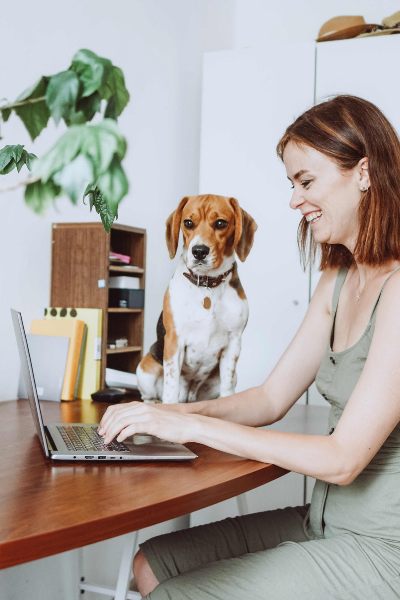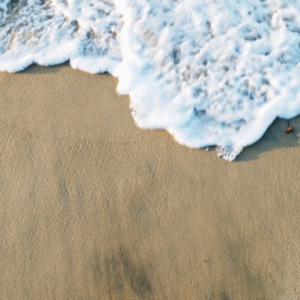This post may contain affiliate links at no extra cost to you.
Should you Start a Blog?
You’ve probably been thinking about starting a blog for a while. I had a blog a few years ago that was only for a hobby. I quit that because I just didn’t have the time I wanted to put into it.
Since you’re reading how to start a blog, you’ve probably already make your decision, so that’s great! I’ll just warn you that it was a lot harder than I thought it would be. I’m putting in a ton of time and effort, so I don’t want the work you have to put into it to come as a surprise.
You also may be wondering if it is too late to start in 2019, and I’m telling you right now, it’s not. In a couple of years, you may be wishing you would have started in 2019, so go for it!
If you decide it’s right for you, it’s time to get started. Committing to starting a blog is a big step, so congratulations!
Now, lets get into how to start a blog: the ultimate guide.
Picking a Niche
The first thing you should do is decide on a niche, or what you want to talk about in your blog. You may want to talk about everything, and that’s okay. It’s your blog. But keep in mind, if you’re looking to monetize or gain traffic, some niches are more suitable than others.
Some common niches are:
- lifestyle
- art
- news
- food
- business
- technology
- health
- fashion
- Making money
I consider my blog to be a lifestyle blog. I talk about interests in my life, like health, fitness, money, etc. It helps to narrow down to a few topics because it can get overwhelming deciding what to talk about. Here is a great article about choosing the perfect niche for your blog.
Creating a Name
Once you’ve decided what your niche should be, you can decide on a name on your blog. This is one of the hardest parts. Make a giant list of all of the words you like or things you’ll be talking about in your blog, and try putting words together. For my blog, Thriving Wonders, these were two individual words that I had on my list. I had never planned on putting them together, but everything else was taken.
Now, I’m glad because I love the name. Just take a few weeks to keep thinking on a name. Domain Wheel is great for seeing what names are taken, and nameboy is a great tool for generating name ideas. Although it is okay if your domain name is different from your blog name, it is ideal if they are the same. Your domain name will be your URL.
Check to see if the domain you want is available below
Setting up Hosting
First of all, what is hosting?
This means you buy and run your own website. There are several reasons for this. By purchasing your own hosting, it makes you look more professional. If you are looking to get sponsored posts or make money from your blog, affiliate and brand programs will be looking for self-hosted websites. It is also a lot better for traffic because you don’t have the extra stuff in your name.
If you are not self-hosted, your domain would be name.blogspot.com or name.wordpress.com. Being self-hosted would take this last bit out and makes you seem more professional. Being self-hosted also gives you control over the website. You own your website. You can also customize your website in ways that you cannot without a self-hosted website. There are several places you can purchase hosting. Some examples of where you can purchase hosting are Bluehost, Hostwinds, GoDaddy, and HostGator.
I personally use Bluehost because it costs less. Keep in mind, you have to pay for the whole year to get the deal for $2.95. If you are paying monthly, it will cost $7.99.
Click on the plan that you want and make your purchase. The provider that you choose will give you instructions for what to do next. I like using wordpress, so on the Bluehost panel, click install wordpress. I’m not sure about other providers, but they should give you instructions for what to do.
Designing your Blog
Now that you’ve purchased your domain and hosting, it’s time to design your blog.
Designing your blog can be a complicated process, and without graphic design experience, you may be stuck. This is why Fivver is an amazing resource you can use. Fivver is an online marketplace for digital services. If you find that you need help designing a logo, creating a landing page, or even proofreading your blog, you can find experienced freelancers to do it for you.
I started off by designing my header and favicon. The header and favicon could be a picture or a logo that represents your blog. The favicon pixel size should be 16×16 or 32×32. The size of your header depends on the theme that you choose. A lot of the themes on WordPress come with different functions, so don’t only think of the way it looks, but also the functionality of the theme. Try out different themes to see if they work for you. Here is a great article about choosing WordPress themes.
I personally used Customizr as the theme, and then downloaded Nimblebuilder (which goes with Customizr). This is basically a drag and drop, which makes it easy to build (limited coding). You also install plugins for designing your blog, such as Jetpack, social sharing, and more.
Some things you will want to include on your blog are a header, pages (for categories), a sidebar (optional), social sharing buttons, links to your social media, an about me page, a privacy policy and a terms and conditions page.
Optimizing for SEO
If you’ve never heard of SEO, this is what is going to drive your traffic. SEO stands for search engine optimization. SEO is what is going to get your page on search engines, like Google. One of the biggest ways you can do this is through keyword research. I won’t get into the specifics in this post, but check out this great article about ways to optimize your blog for SEO.
I highly suggest installing the Yoast plugin. This is a plugin that helps you with SEO. It ranks you and tell you what you can do to improve SEO. Some examples are including key words through your posts (mine are how to start a blog), providing alt text for images, writing posts longer than 300 words, and crafting a good title and meta description. There are also ways to optimize your whole website for SEO, such as site mapping. Here is an article guides you in optimizing your website for SEO. If you want more help (I still need help), there are sources out there to help you.
If you are struggling with SEO, you can find services on Fivver to ensure that your that your website and blog posts are getting seen using SEO.
Writing a Blog Post
Now that you’ve designed and optimized your website, it’s time to start writing? The numbers vary, but a lot of bloggers like to have a few posts on their website before they launch so it doesn’t look empty.
Write about things that fall into your niche, and remember to optimize your posts for SEO, like I talked about in the above section. I like to do this using the Yoast plugin. Make sure you’re using key words, providing alt text for images, and writing at least 300 words. After you have a few posts written, it’s time to launch!
Writing your posts is what is going to get you traffic and one of the most important steps in knowing how to start a blog.
Promoting your Blog
After you launch your blog, you’re going to want traffic. It’s really hard starting off with a new blog. People aren’t going to just magically find your blog; you have to promote it. Some places you can promote your blog are Facebook, Pinterest, Twitter, Instagram, Reddit, Quora, Bloglovin’, Stumbleupon, etc. Blogging Wizard has an amazing article about how you can promote your new blog.
I mentioned using Fivver earlier to help with designing your blog, but you can also use Fivver to get some traffic to your blog. You can get paid to write blog posts or get help writing blog posts with this service.
Creating your blog is kind of a never ending process. You’re going to want to go back and change the design or just continue to improve it. You can also refer back to the previous steps if you feel like you didn’t quite hit those steps like you should have. I hope this How to Start a Blog: The Ultimate Guide helped, and good luck!










[…] Or why not start a blog? It’s really simple to start, and if done right, you could be making passive income in the future. If you want to know how to start a blog, check out this great post by Thriving Wonders. […]